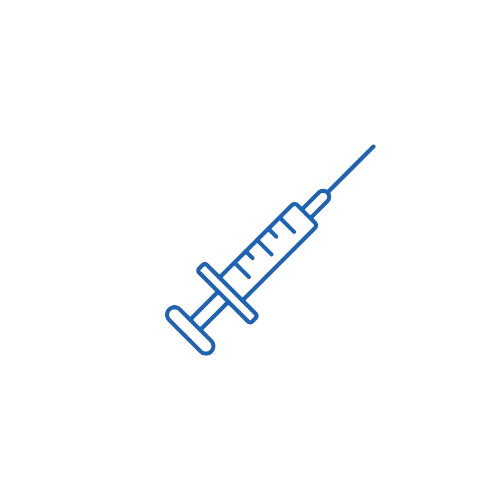Methylergonovine Maleate
Indications
Approved Indications
- Prevention and treatment of postpartum hemorrhage (PPH) due to uterine atony
- Management of subinvolution of the uterus following childbirth
- Enhancement of uterine involution after delivery
- Control of uterine bleeding following cesarean section or abortion
- Adjunct in active management of the third stage of labor to reduce blood loss
Clinically Accepted Off-label Uses
- Treatment of uterine atony not responsive to oxytocin
- Prophylaxis of postpartum hemorrhage in high-risk patients (e.g., multiple gestation, polyhydramnios, prolonged labor)
Dosage & Administration
Routes of Administration: Oral, intramuscular (IM), intravenous (IV – only with caution)
Adults (Postpartum Women)
Oral Administration
- Dose: 0.2 mg orally, 3–4 times daily
- Duration: Up to 1 week postpartum, depending on uterine response
Intramuscular (IM) Administration
- Dose: 0.2 mg IM after delivery of the anterior shoulder or immediately after placenta delivery
- May be repeated every 2–4 hours as needed
- Preferred route for active management of PPH
Intravenous (IV) Administration
- Only if IM not feasible and under careful monitoring
- Dose: 0.2 mg slow IV injection over ≥60 seconds
- Monitor for sudden hypertension and vasoconstriction
Elderly & Pediatrics
- Not indicated in pediatric or elderly patients
Hepatic or Renal Impairment
- Use cautiously; reduce dose or avoid in severe hepatic or renal dysfunction due to risk of accumulation and toxicity
Mechanism of Action (MOA)
Methylergonovine is a semi-synthetic ergot alkaloid that acts directly on uterine smooth muscle. It is a potent partial agonist at alpha-adrenergic, serotonin (5-HT2), and dopaminergic receptors, which promotes rhythmic and sustained uterine contractions. By increasing the tone and rate of uterine contractions, methylergonovine helps reduce postpartum bleeding and accelerates uterine involution. Its primary action is on the myometrium, particularly at the upper uterine segment.
Pharmacokinetics
- Absorption: Rapidly absorbed after oral or IM administration
- Bioavailability: Oral ~60%, IM >80%
- Distribution: Widely distributed; crosses the placenta and appears in breast milk
- Onset of Action:
- Oral: ~30–60 minutes
- IM: ~2–5 minutes
- IV: ~1 minute
- Duration of Effect:
- Oral: ~3 hours
- IM/IV: ~45 minutes to 3 hours
- Metabolism: Hepatic (extensive first-pass metabolism)
- Elimination: Primarily biliary and fecal, minor renal excretion
- Half-life: ~1–2 hours
Pregnancy Category & Lactation
Pregnancy
- FDA Pregnancy Category C
- Contraindicated during pregnancy due to its potent uterotonic effects, which can cause uterine contractions, miscarriage, or fetal compromise
- Approved only for postpartum use
Lactation
- Excreted into breast milk
- Use with caution in breastfeeding mothers
- May cause nausea, vomiting, diarrhea, or convulsions in infants
- Recommended to delay breastfeeding for at least 12 hours after IV or IM dose or consider withholding breastfeeding temporarily
Therapeutic Class
- Primary Class: Uterotonic Agent
- Subclass: Ergot Alkaloid
- Pharmacologic Class: Oxytocic/Ergot Derivative
Contraindications
- Known hypersensitivity to ergot alkaloids
- Pregnancy (prior to delivery)
- Hypertension or preeclampsia/eclampsia
- Severe hepatic or renal impairment
- Coronary artery disease (CAD) or peripheral vascular disease (PVD)
- Sepsis
- Recent ergotamine or other vasoconstrictive drug use
- Raynaud’s syndrome or other vasospastic conditions
Warnings & Precautions
- Severe Hypertension: Can cause sudden, extreme blood pressure elevation—especially with IV use
- Cardiovascular events: Risk of vasospasm, angina, MI, or stroke
- Avoid rapid IV injection
- Avoid combination with CYP3A4 inhibitors (e.g., erythromycin, ketoconazole) due to increased risk of ergot toxicity
- Risk of seizures, hallucinations, and peripheral ischemia
- Liver function must be monitored during prolonged use
- Do not use with other vasoconstrictors or triptans
- Avoid use in patients with vascular disease
Side Effects
Common
- Nausea, vomiting, abdominal pain
- Headache, dizziness
- Diarrhea
- Elevated blood pressure
Less Common / Serious
- Coronary vasospasm, chest pain, myocardial infarction
- Hypertensive crisis
- Seizures
- Hallucinations or psychosis (rare)
- Peripheral vasospasm or gangrene
- Stroke or cerebrovascular accident
Onset: Typically within minutes of IM/IV administration
Severity: Can be life-threatening if misused or given IV too rapidly
Dose-dependence: Yes, especially for vasoconstrictive effects
Drug Interactions
- CYP3A4 inhibitors (e.g., erythromycin, clarithromycin, protease inhibitors, azole antifungals): Increased methylergonovine plasma levels → toxicity
- Vasoconstrictors (e.g., epinephrine, triptans): Risk of severe hypertension or ischemia
- Other ergot alkaloids: Additive vasoconstrictive effects
- Beta-blockers: May enhance vasoconstriction
- Dopaminergic agents: Potential interaction via shared receptors
- Enzyme Involvement: Primarily metabolized via CYP3A4 — co-administration with inhibitors is contraindicated
Recent Updates or Guidelines
- FDA (2023): Reinforced contraindication with strong CYP3A4 inhibitors due to life-threatening ergot toxicity (e.g., ischemia, gangrene)
- WHO Guidelines (2023): Still recommends methylergonovine as a second-line agent for PPH when oxytocin is unavailable or ineffective
- FIGO and ACOG: Continue to endorse methylergonovine for active management of the third stage of labor, with strong cautions in hypertensive women
Storage Conditions
- Temperature: Store between 20°C to 25°C (68°F to 77°F)
- Humidity: Keep in a dry place
- Light Protection: Store in a light-resistant container
- Handling Precautions:
- Do not use discolored solution
- Keep ampoules away from heat or direct sunlight
- Refrigeration: Not required
- Reconstitution: Not applicable (ready-to-use formulation)

